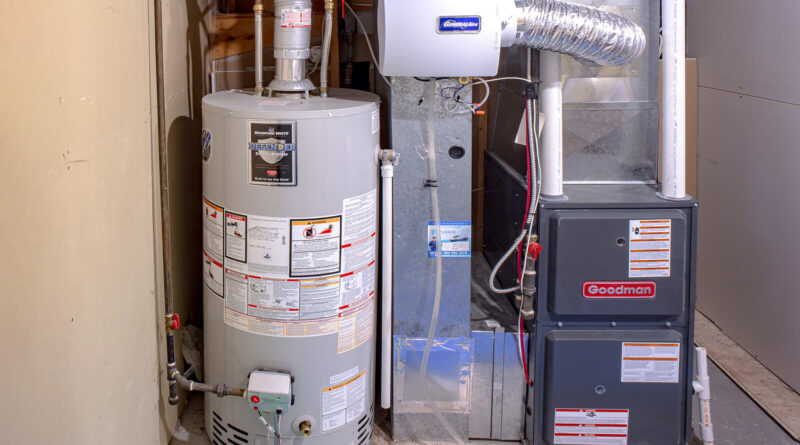Expert Gas Furnace Solutions
Gas furnaces are a key part of modern home heating systems, providing warmth and comfort during the colder months. With various models and features available, understanding gas furnaces is essential for homeowners to make the best choice for their needs. This guide explores what gas furnaces are, their benefits, how to select the right one, and essential maintenance tips to keep your system operating efficiently.
What Is a Gas Furnace?
A gas furnace is a heating system that uses natural gas or propane to produce heat. The furnace draws in air, heats it via a gas-powered heat exchanger, and then circulates the warm air through ducts to heat the entire home. When a thermostat signals that the temperature has dropped below the desired level, the furnace ignites a burner to warm the heat exchanger, thereby warming the air. The furnace blower then moves this heated air throughout the house.
Benefits of Gas Furnaces
- Cost-Effective Heating
Gas furnaces typically offer a lower operating cost compared to electric heating systems. Natural gas tends to be more affordable, providing significant cost savings on energy bills during the colder months. - Fast and Efficient Heating
Gas furnaces heat homes quickly and effectively. Unlike electric heaters that may take time to warm up, gas furnaces provide almost immediate warmth, making them ideal for regions with harsh winters. - Longer Lifespan
High-quality gas furnaces often last longer than other heating systems, with a typical lifespan ranging from 15 to 20 years. Regular maintenance can extend this period, ensuring you get the most value for your investment. - Energy Efficiency
Modern gas furnaces are designed with energy efficiency in mind. Many models feature advanced technology like variable speed blowers and two-stage burners, helping reduce energy consumption and utility costs. - Eco-Friendly Option
Natural gas burns cleaner than other fossil fuels, resulting in fewer greenhouse gas emissions. Opting for a gas furnace can contribute to a greener environment.
Types of Gas Furnaces
- Single-Stage Furnace
Single-stage furnaces operate with one heat output level. They are either on at full capacity or off, making them less efficient than multi-stage models. However, they are typically more affordable to purchase and install. - Two-Stage Furnace
A two-stage furnace offers two levels of heat output: high and low. This flexibility ensures better temperature control, increased energy efficiency, and quieter operation. - Modulating Furnace
Modulating furnaces adjust the heat output incrementally, offering precise temperature control and maximizing energy savings. While more expensive upfront, these furnaces often provide significant long-term savings and comfort.
Choosing the Right Gas Furnace
When selecting a gas furnace for your home, several factors should be considered:
- Climate
In regions with extremely cold temperatures, a high-efficiency gas furnace may be necessary to keep up with heating demands. In milder climates, a standard-efficiency model may suffice. - Size
Furnace size is critical for efficiency and comfort. A furnace from The AC Outlet that is too large will cycle on and off frequently, wasting energy, while a furnace that is too small will struggle to heat your home adequately. It’s best to have a professional perform a load calculation to determine the appropriate size for your space. - Efficiency Rating (AFUE)
Annual Fuel Utilization Efficiency (AFUE) measures how efficiently a furnace converts fuel into heat. A higher AFUE rating indicates a more efficient furnace. Look for models with at least 80% AFUE for standard efficiency or 90% and above for high-efficiency units. - Features
Consider features such as variable-speed blowers, two-stage burners, and smart thermostats, which enhance comfort and energy savings. - Budget
While high-efficiency furnaces offer long-term savings, they may have a higher upfront cost. Balance your initial investment with potential energy savings to find the right fit for your budget. - Installation
Proper installation is critical for furnace performance. Ensure that your furnace is installed by a licensed and experienced HVAC professional to maximize its lifespan and efficiency.
Maintenance Tips for Gas Furnaces
- Change the Air Filter Regularly
Dirty air filters restrict airflow, making your furnace work harder and less efficiently. Replace filters every 1-3 months, depending on usage and manufacturer recommendations. - Inspect and Clean the Furnace
Have your furnace inspected and cleaned by a professional at least once a year. This includes checking the burners, heat exchanger, and blower motor for any signs of wear or damage. - Monitor the Thermostat
Ensure your thermostat is working correctly. Consider upgrading to a programmable or smart thermostat to improve energy efficiency. - Check for Leaks
Gas furnaces rely on secure connections and a closed combustion system. Any gas leaks can be dangerous and should be addressed immediately. If you smell gas, evacuate and contact a professional. - Ensure Proper Ventilation
Proper ventilation prevents the buildup of harmful gases such as carbon monoxide. Make sure exhaust vents are clear and free of obstructions. - Test the Carbon Monoxide Detector
A functioning carbon monoxide detector is essential for homes with gas furnaces. Test it regularly to ensure it is operational and replace the batteries as needed.
Why Gas Furnaces Remain a Popular Choice
Gas furnaces offer a combination of efficiency, reliability, and performance that makes them a popular choice for many homeowners. They provide consistent heat, operate efficiently, and can be environmentally friendly compared to other fossil fuel-based heating systems. With regular maintenance and the right features, a gas furnace can offer years of warmth and comfort.


